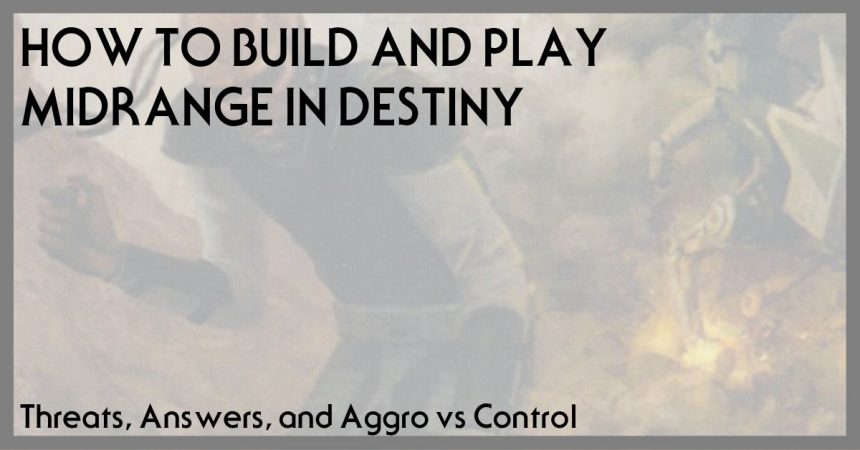Wait, There Was a Reason You Were Playing That Stuff?
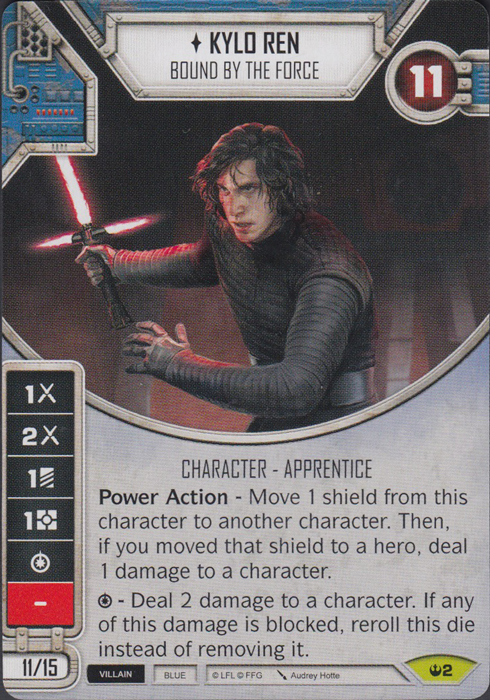
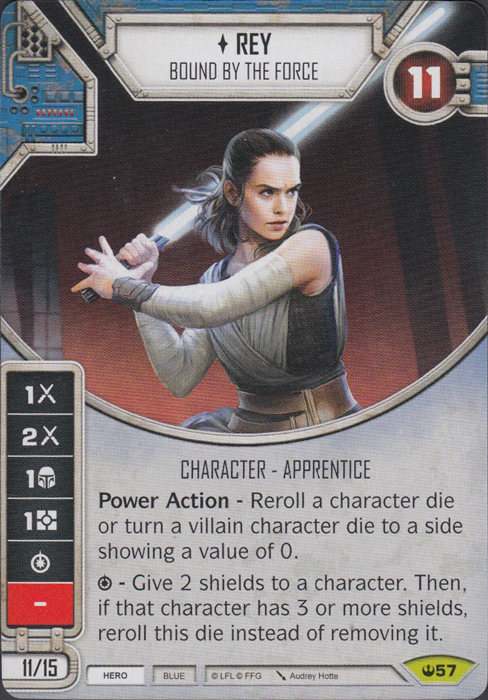
Spark of Hope officially launched a couple of weeks ago. Many content creators are prepping for Gen Con, and ideas for new decks are flying around like a flock of owls. I personally won’t be playing in a bigger tournament until Worlds, but I’ve spent a fair amount of time crafting decks and trying some new things. My favorite deck to play so far in the SoH meta is undoubtedly Kylo/Rey (SH2/SH57). This article will spend some time talking about why I built my version of the deck the way that I did, how I play it, and why I believe that midrange decks can be successful.
I hope that I can also explain some TCG theory in the context of Star Wars: Destiny. I firmly believe that understanding some of these theories can help you in building and playing your own decks! Anything I put in bold text in this article is something you could easily do further research on. There are a multitude of articles based on decades of theory work out there (centered around Magic: The Gathering) that all card gamers can learn from.
Deck Building is Intimidating. Deck Building is Also Rewarding (Sometimes).
I want to start by saying that deck building can be an intimidating aspect of any card game. Developing the skill to build a meta-warping or meta-beating brew requires a firm knowledge of the metagame, a little bit of imagination, a solid grounding in some key concepts, the courage to take some risks, and a willingness to do a little math. Even great deck builders occasionally put their faith in poor decks. I don’t think there is any shame in “net-decking” to win, especially as a new player. I actually encourage it if you want to skip straight to the “playing” part of Star Wars: Destiny. That said, deck building can be a process that provides you a source of pride when your brews are successful.
If Only I Could Think of Something Fun to Play!
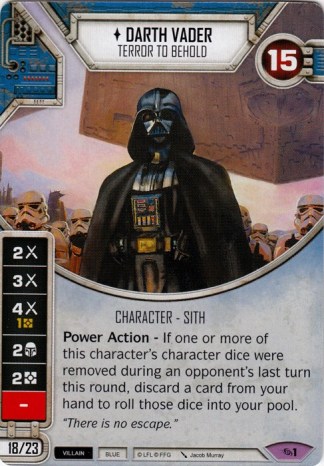
All decks start with an idea. For example: R2-D2 and C-3P0 should work with Han Solo on the Millennium Falcon; Darth Vader could totally murder these Ewoks at my local; Kylo and Rey should battle together; Yoda needs to teach these kids how to fight; basically, anything you can think of you can try to build. You may decide you don’t care who the characters are. Maybe you only want to play if you can play an aggro deck or a control deck. There is no deck if there is no initial idea or concept of what the deck should be, though. The first part of deck-building is just having an idea!
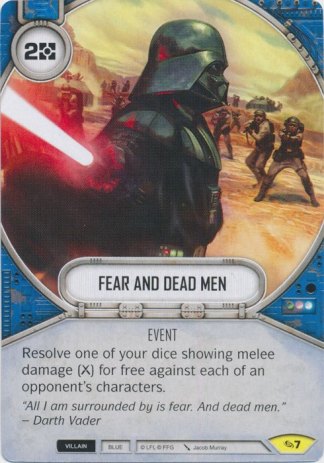
Destiny decks often begin with character choice, because your characters determine the direction your draw deck will go in. As an example, 0-0-0 (WF49) and BT-1 (LG24) are great cards, but playing them without Doctor Aphra (LG20) would be substantially worse than playing them with her. The exception to that would be decks built around cards in the draw deck (i.e. Vader’s Fist (AG13), Entourage (CV152), Megablaster Troopers (CV31), or Pulse Cannon (SH54)). In those decks, certain cards lead you to playing characters that help you play them or enhance their effects. Examples could be Entourage with Snoke (WF04) and Watto (CV38) pre-errata, or Megablaster Troopers with Captain Phasma (CV18).
Midrange is One of Those Words Everyone Knows and Nobody Can Actually Define.
Once you have an idea for your deck, you have to consider where that deck would fit in the meta. Does another character combination do what your deck is trying to do, but better? If you want to play aggro, for example, is your deck a better choice than a Darth Vader (AG01) deck would be? Kylo/Rey is a classic middle/middle deck, and it is one that features quite a bit of flexibility and versatility. It fits in solidly with many other decks that could be loosely labeled as “midrange“. A midrange deck plays defensively (reactively) when matched up with aggro decks, and it plays proactively, with a tempo-based approach, when matched up with a control deck. Midrange is exactly what it sounds like – a style of deck that sits somewhere in the middle.
Threats, Answers, and Aggro vs Control
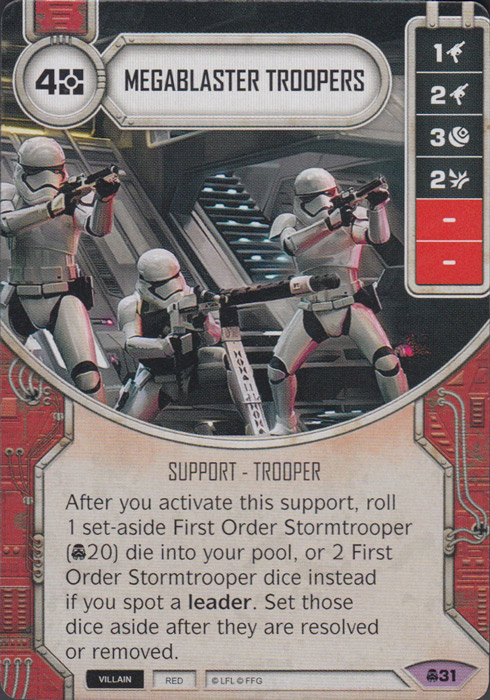
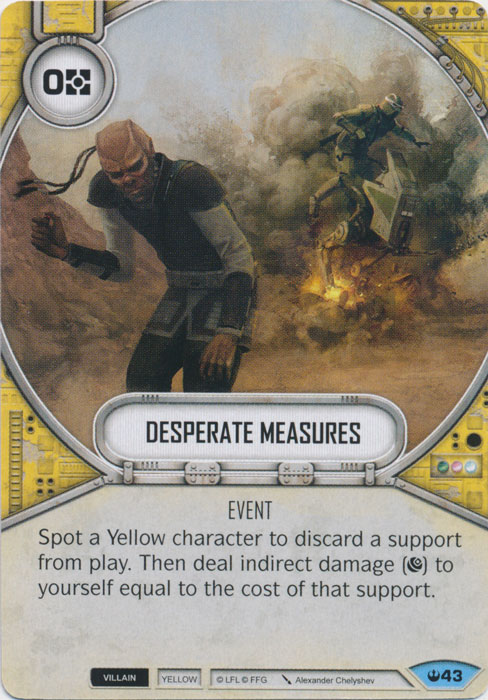
Your draw deck itself is a place that you can express your creativity (and showcase your understanding of deck building theory and the meta). My Kylo/Rey deck, for example, reflects many of my own beliefs about threats and answers. Decks in any TCG are made up of some combination of threats and answers. Threats in Star Wars: Destiny are cards that advance your win condition. In most decks, these will be cards that do damage. They can do this either by adding dice to the pool or by directly dealing damage to your opponent. In mill, these cards would be those that have effects that discard cards from an opponent’s hand or deck.
Answers are your control pieces, cards that remove dice or discard supports and upgrades. How you spend your resources helps to identify which kind of deck you’re building. If you want your early game resources go to threats, you should try building and playing an aggro deck. The opposite is true for control strategies, which generally work to answer their opponents threats while building up their own.
How to Counter a Meta in 100 Words (Gameplay Still Required).
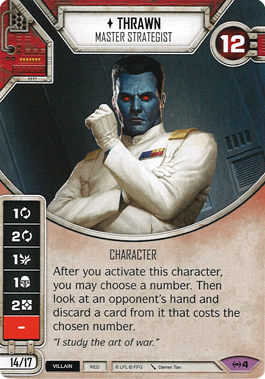
Typically, the player who has the most unanswered threats at the end of the game is the player who wins. You can determine which deck should be favored in a match-up by lining up answers and threats and determining which deck has more unanswered threats against the other. This is called lineup theory. Lineup theory can be used in-game as a way to assess possible answers your opponent might have to counter your threats. It also helps you to figure out when to play removal to make sure you can still deal with possible remaining threats on the other side of the table. This only works if you know your own deck (and the meta) well enough to make informed decisions, though, so understanding how a lot of decks are put together is vitally important!
As a fun aside, my Kylo/Wullf (TP1/AG21) deck from the past regional season was designed to include as many answers as possible to Thrawn/Snoke (EW4/WF4). This was largely why it was successful against a deck that was objectively much better than it was. Obviously it’s a little more complicated to win a tournament than just running answers, since you still have to play and win your games (plus not every matchup is going to be “against the meta”). That said, trying to devise a meta-counter can really be that simple. Find solid answers to common threats and build with them in mind!
Why I Made Some of My Choices in Kylo/Rey
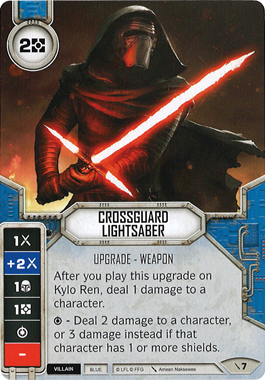
After reading both Kylo and Rey, I knew I wanted to build a midrange deck with them. I also knew that I would need to make sure I could lineup well against my local meta. I prefer decks with a low resource curve, because I think they tend to be more flexible. If I can play three upgrades by the end of turn two, I’m usually pretty happy. I don’t like to play big upgrades in decks that aren’t specifically trying to. This comes back to threats and answers; I don’t like making big investments that are easily answered. I like to keep my opponents off balance, and I think multiple threats do that better than one big threat. That isn’t true in every deck, but it’s a general rule I go by in deck building. Don’t make plays you know your opponent can easily stop.
Versatility (Noun): The Ability to Adapt
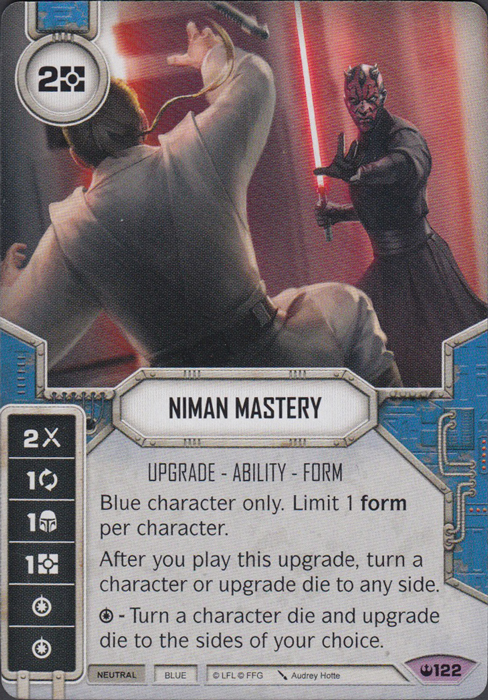
So, I decided to go midrange with as much flexibility as I could stuff into a deck. I knew this build would require a lot of cards with versatility in order to survive in my local meta. Versatile cards are cards that are both threats and answers. In other words, they are cards that can be what the player needs them to be on a given turn. Rey does this extremely well with her Power Action, but her dice are great at this, too. Her special is an excellent reactive play, because shielding up in response to threats is an answer. It’s doubly effective if you can re-roll her die back in after resolving it, either to do damage or to gain more shields.
Many cards in this deck work this way: Niman Mastery (SH122), to aggressively turn your dice or to turn an opponent’s dice as control; Rey’s Lightsaber (TP30) and Jedi Lightsaber (SH72), which add aggressive dice to the pool and give characters shields; Polarity (SH117), which deals and damage and gives you a shield; and, finally, Loth Wolf Bond (WF59) gives your characters shields and also pushes all of your dice into the pool. Other cards, like Pacify (WF61), also offer choices that split along these lines. Midrange decks reward players who know when to use their effects passively and when to use their effects to push for the win.
Why Are You Still Talking About The Beatdown?
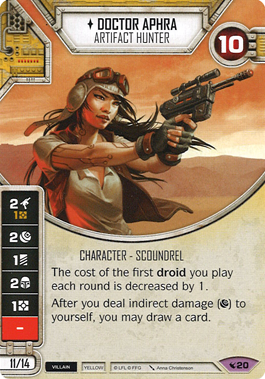
Many of you are familiar with the old Star City Games article “Who’s the Beatdown.” I’ll restate that it is absolutely critical for a midrange player to be able to answer that question. Who’s the beatdown? You will lose a lot of games if you do not create a game plan that correctly identifies your role. When I play Kylo/Rey, the first thing that I do is examine my opponent’s character lineup and decide if I am playing aggressively or defensively. This determines my mulligan strategy.
Some games flow in such a way that your role changes or evolves over the course of several rounds. That said, if my opponent is playing Vader, I know that I’m probably playing the control pieces I have in my hand and using Rey’s Power Action defensively. I also know I’m going to resolve some shield sides if the situation calls for it. If my opponent is playing Aphra or Droids, I know I need to kill characters quickly. Decks like Aphra are designed to hit a point in which they have too many threats to answer. This means that I am using Rey’s Power Action on Kylo’s dice, aggressively playing upgrades, and trying to resolve Rey’s dice for melee damage. You set the tempo in matchups like that, so it’s to your advantage to play hard and fast.
(Insert Thanos Reference Here)
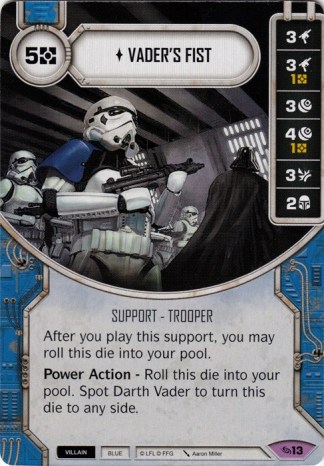
Kylo/Rey is not a deck that takes a long time to reach its endgame state. This looks like a loaded up Kylo/Rey and a lot of dice hitting the pool, with shields to protect them. However, it is also not a deck that forces an overwhelmingly powerful state of inevitability on your opponent. Inevitability is something that happens at the end of games, when both players’ decks are as built up as they’re going to get. In a matchup of two builds, one deck will always have a more powerful endgame than the other, and will (in all likelihood) win the game if both decks are allowed to reach that state. It’s… inevitable.
Kylo/Rey will lose to Doctor Aphra or wide vehicles if the game goes long enough that those decks achieve their endgame, so it is imperative to end the game before that happens. This is why it is so important to have a gameplan for every game, and why it matters to recognize when to be aggressive and when not to be.
Your Opponent Will Have a Plan. Don’t Lose Because You Don’t.
Having a game plan that complements your assumed role will help you start winning games much more frequently. I’m not saying Kylo/Rey is tier one, but I do believe that midrange strategies are viable in the metagame. I think Kylo/Rey has a place at the table going forward, and is no worse than a tier two deck. That said, it will only win if players using the deck play sharply and with minimal mistakes. If you decide to be the aggro deck in a matchup, go hard in that direction. If you decide to play the control deck, don’t get sloppy or greedy with your plays. Messing this up is easy to do and leads to some frustrating losses along the way!
I’m a Teacher by Trade. I’m Allowed to Ask People to Read.
A mountain of content exists on the internet further expanding on some of the concepts that I discussed here. Simply googling any of the words I bolded along with “tcg” or “Magic” will return hundreds of results. Whether you are a new deck builder, an experienced deck builder, a novice player, or a veteran player prepping for Gen Con, extra reading has never hurt anyone! If you are playing at Gen Con, or even at a local event coming up, I recommend that you take a moment to examine your choice in deck. Make sure you know your own cards, and make sure that you have a gameplan for common matchups before you ever sit down at the table. Being prepared (and playing a deck you understand) is a strong start to a successful tournament experience! Good luck at Gen Con and I hope to see many of you at worlds in October!
Support The Chance Cube
Do you enjoy the content provided by The Chance Cube? Would you like to connect even further with The Chance Cube Family? Consider supporting this content by joining our Patreon. We are a team dedicated to media coverage and community building, committed to bringing you the best of this game, sharing the joy and community that comes with it. Our Patreons enjoy membership in The Chance Cube Hangout, our Facebook group for supporters of the channel, and we have additional tiers that include gifts from us to you as a thanks for the generous support. Find out more at patreon.com/thechancecube.
